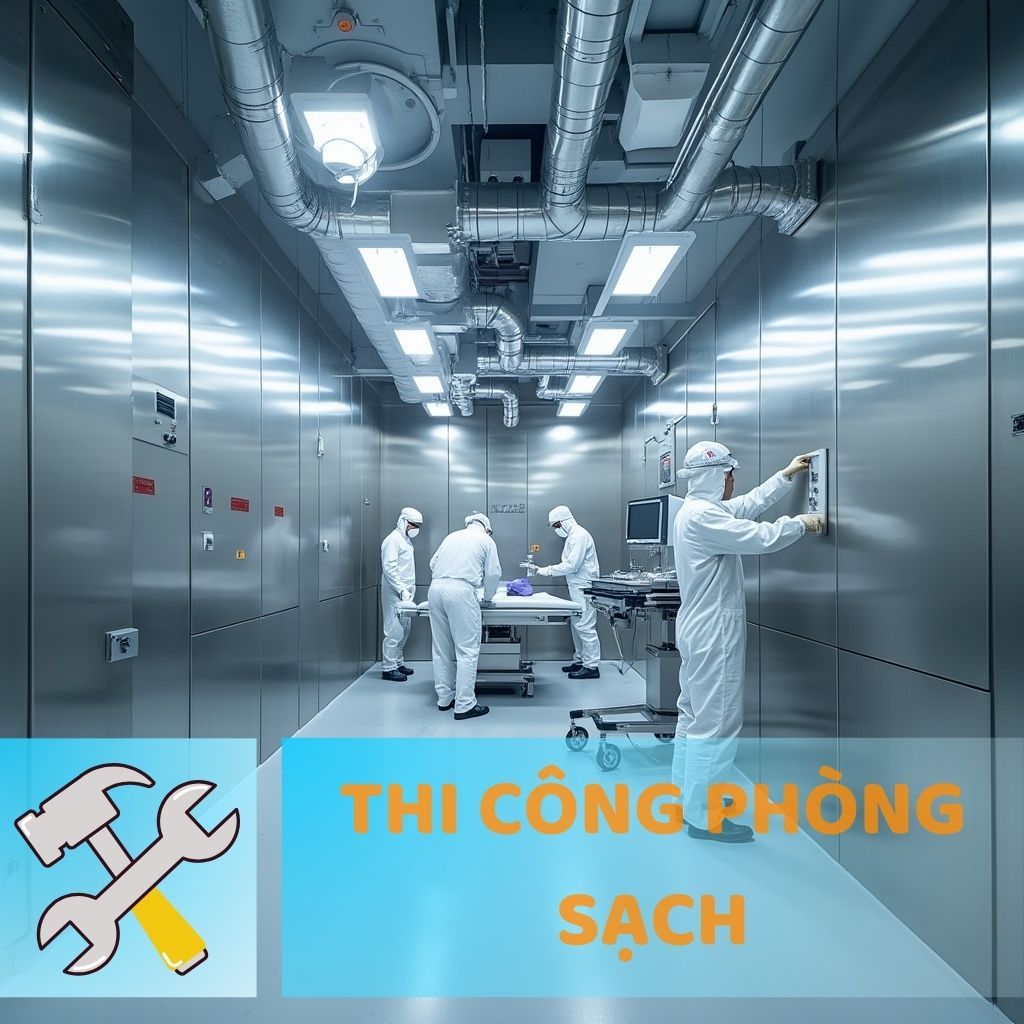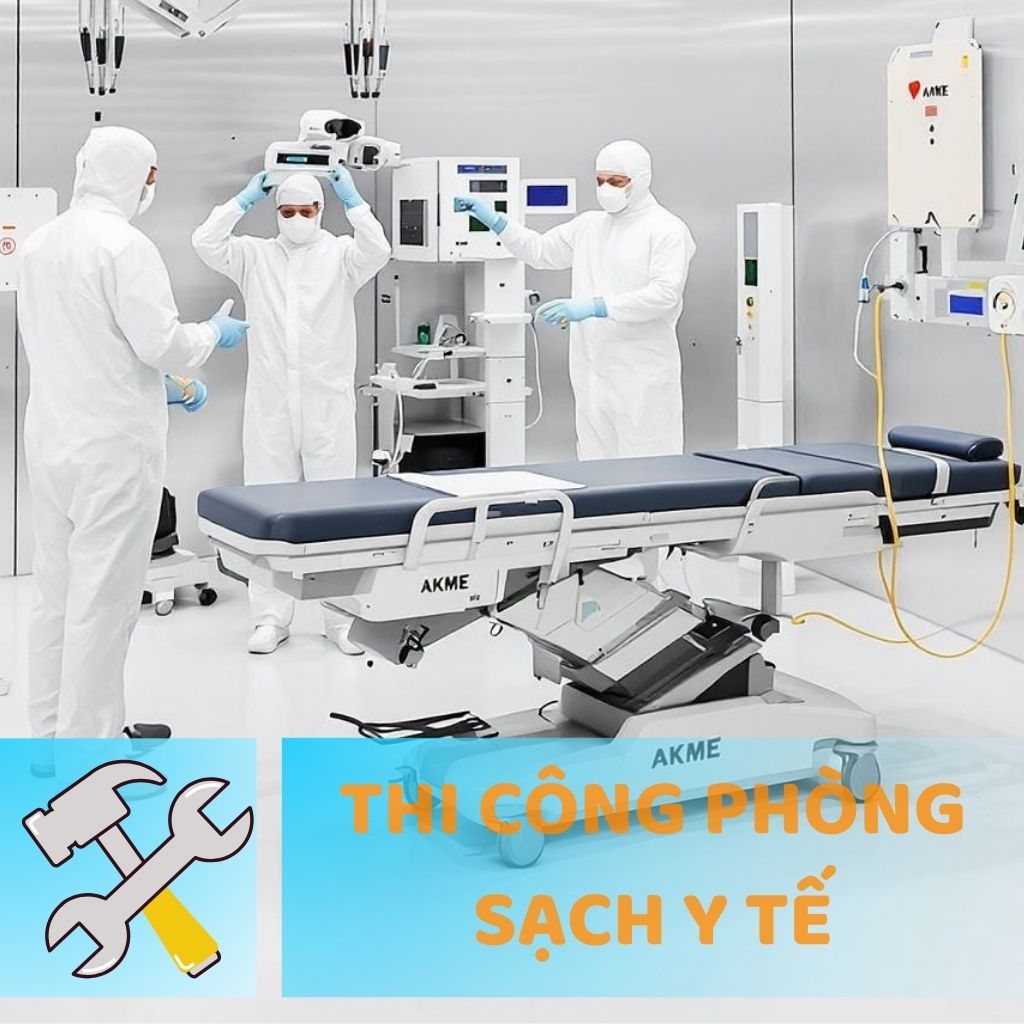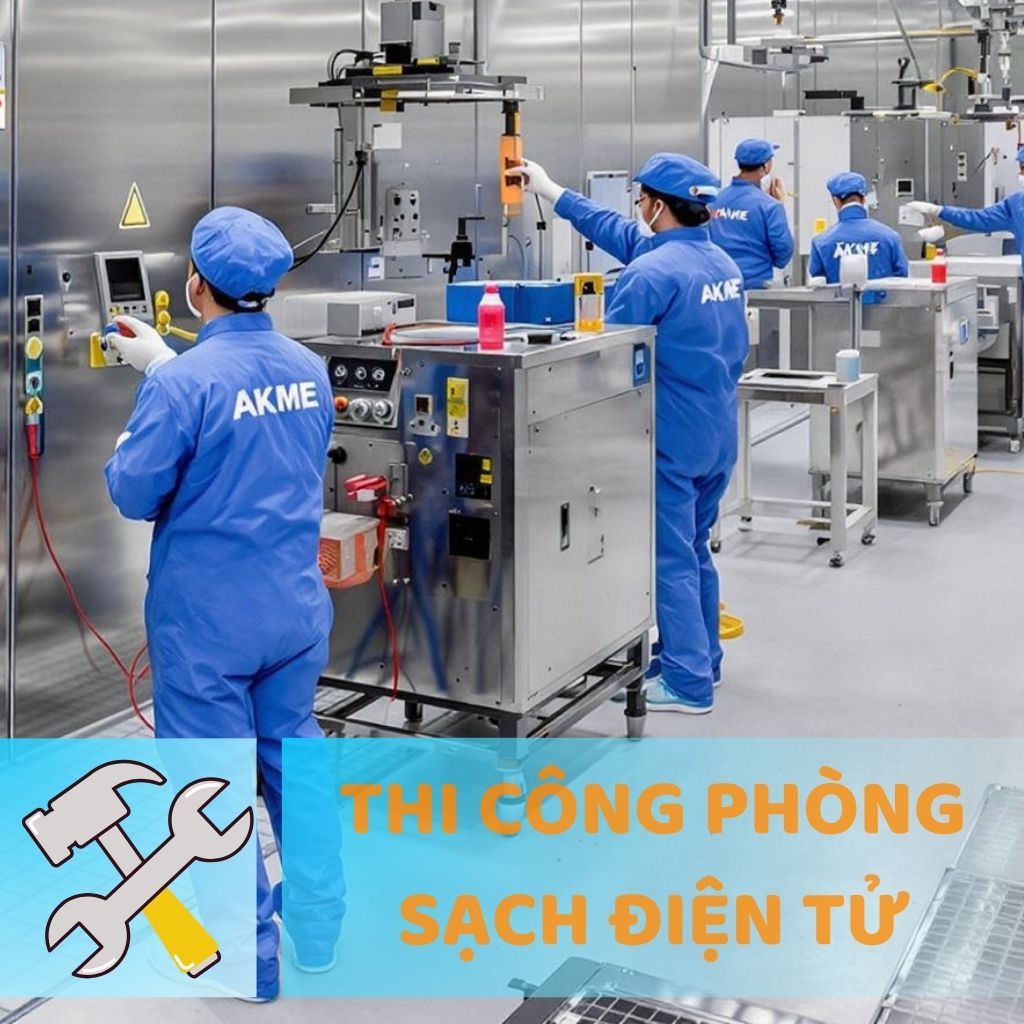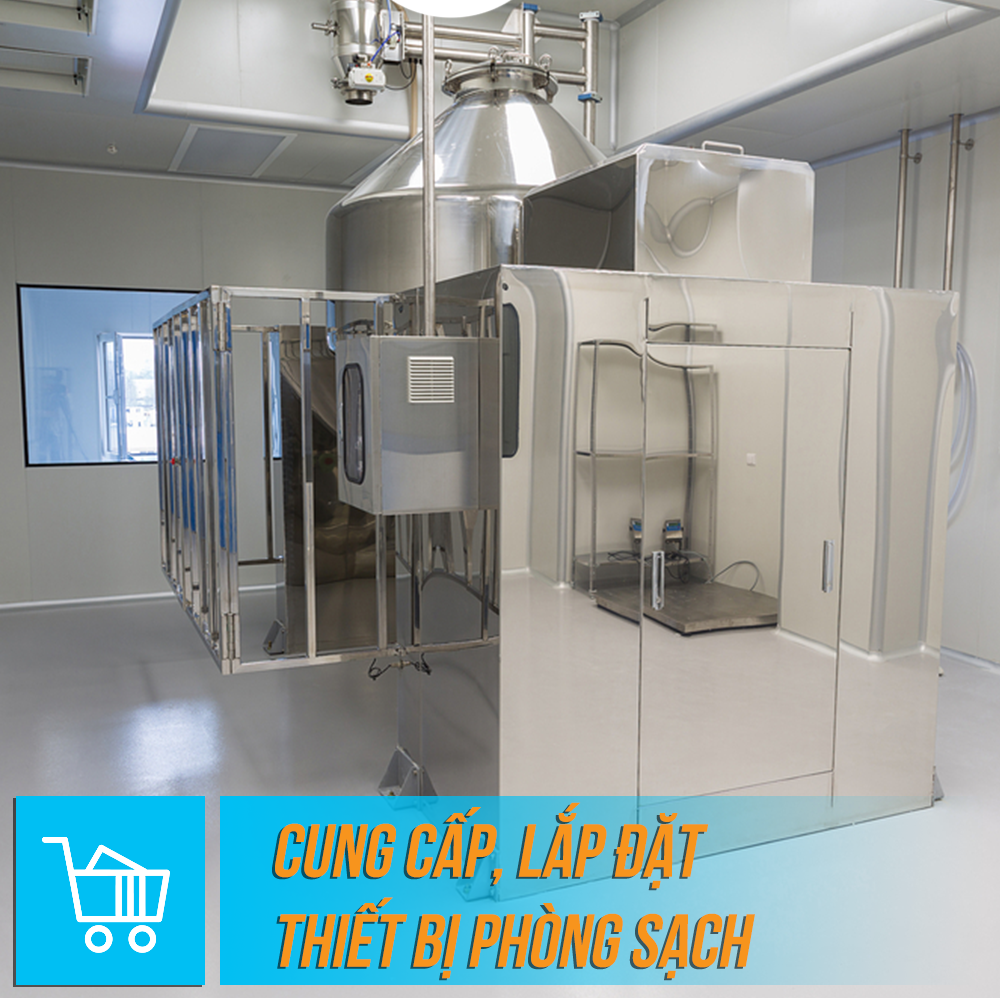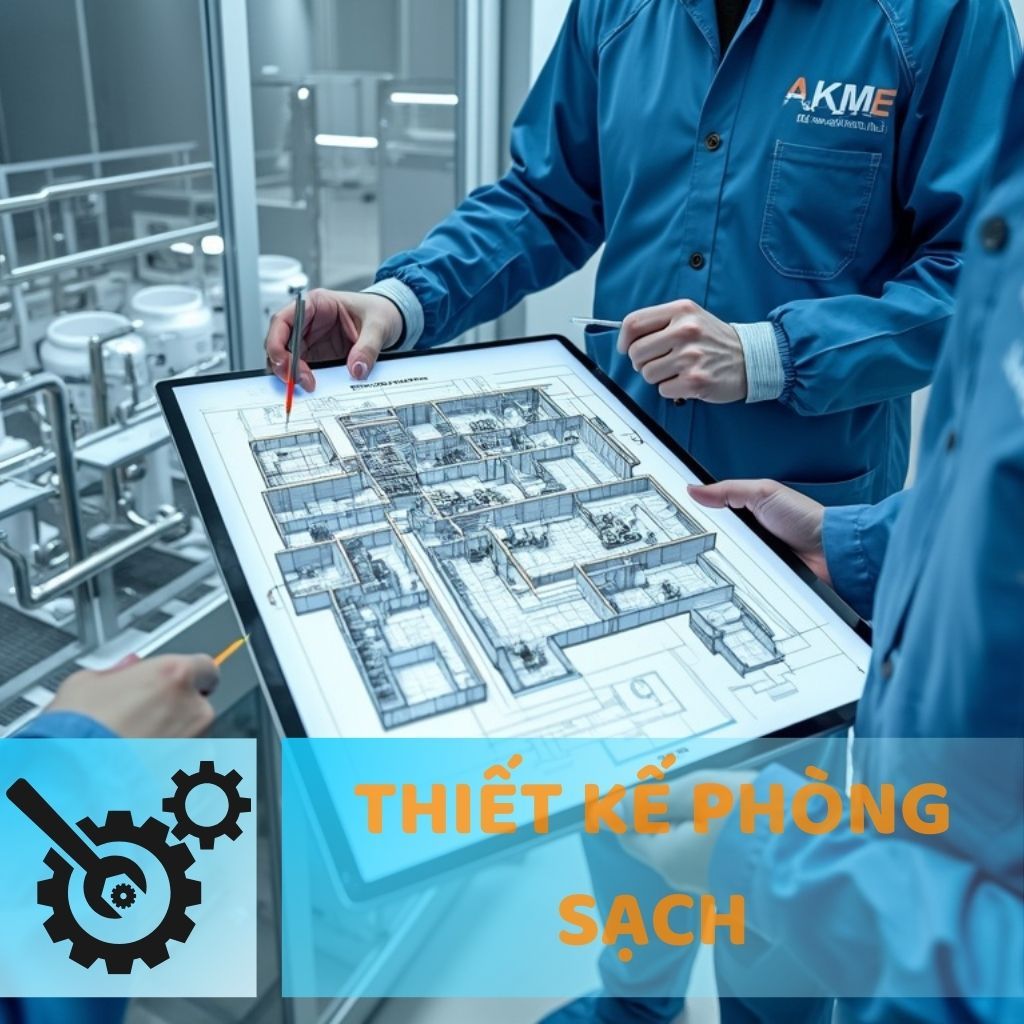Sustainable Cleanroom Humidity: The Important Role of Water Quality
11:41 - 17/09/2025 364
Discover the importance of sustainable humidity in cleanrooms and the essential role of water quality. Learn about energy-saving technology and advanced water treatment systems for efficient cleanrooms.
Types of cleanroom walls: Comparison and how to choose the right one
Why is steel piping essential in electronic component manufacturing plants?
Positive Pressure or Negative Pressure? A Standard Guide to Cleanroom Design
Mistakes to Avoid When Designing Cleanroom Electrical and Lighting Systems
☰ Article Table of Contents
- 1. The Essential Role of Humidity in Cleanroom Environments
- 1.1. The Importance of Humidity Control
- 1.2. Consequences of Poor Humidity Control
- 1.3. Optimizing Energy Efficiency
- 2. Sustainable Humidification Technology in Cleanrooms
- 2.1. Sustainability Challenges
- 2.2. Current Trends in Sustainability
- 2.3. Energy-Efficient Humidification Methods
- 3. Water Quality Standards for Cleanrooms
- 3.1. The Importance of Water Quality
- 3.2. ISO 14644 Standards
- 3.3. USP and EP Standards for Pharmaceutical Water
- 4. Water Treatment Systems for Cleanroom Applications
- 4.1. The Importance of Feed Water Quality
- 4.2. Impact of Feed Water Quality on Humidifier Sustainability
- 4.3. Advanced Water Treatment Systems
- 5. Sustainable and Energy-Efficient Cleanroom Design
- 5.1. Energy Challenges
- 5.2. Energy-Saving Methods
- 5.3. Water Conservation in Cleanroom Design
- 6. Wastewater Management and Recycling in Cleanrooms
- 6.1. The Importance of Wastewater Management
- 6.2. Advanced Treatment Technologies
- 6.3. Successful Water Recycling Projects
- 7. Smart Monitoring and Control Systems
- 7.1. Continuous Monitoring
- 7.2. Advanced Automation Systems
- 7.3. Energy Optimization through Smart Control
- 8. Technology Trends and the Future of Sustainable Cleanrooms
- 8.1. Energy-Saving Technologies
- 8.2. Integration of Renewable Energy
- 8.3. Life Cycle Analysis and CO2 Impact
- 9. Best Practices for Sustainable Humidity
- 9.1. Optimizing Air Change Rates
- 9.2. Dedicated Humidification Systems
- 9.3. Integrated Approach
- 10. Conclusion: Towards a Sustainable Future for Cleanrooms
In the era of sustainable development, high-tech industries such as pharmaceuticals, electronics, and biotechnology are actively seeking smarter and more environmentally friendly environmental control solutions. Cleanrooms, with their critical role in maintaining strict manufacturing standards, are becoming a focal point in this sustainability revolution. One of the most important aspects of sustainable cleanroom management is the control of humidity and water quality—two factors that are closely linked to operational efficiency, operating costs, and environmental impact.
The Essential Role of Humidity in Cleanroom Environments
The Importance of Humidity Control
Relative humidity in cleanrooms is typically maintained between 30% and 50%, with a narrow tolerance of ±1% for critical areas like photolithography, or even smaller in deep ultraviolet (DUV) processing areas, while other areas are maintained within a ±5% range. This humidity control not only affects product quality but also directly impacts the energy efficiency and sustainability of the entire system.
Consequences of Poor Humidity Control
Relative humidity leads to a range of contaminating factors that can degrade the overall performance of a cleanroom, including bacterial growth, electrostatic discharge, metal corrosion, water vapor condensation, photolithography degradation, and moisture absorption. Bacteria and other biological contaminants can thrive in environments with relative humidity above 60%, while some microorganisms can grow when relative humidity exceeds 30%.
Optimizing Energy Efficiency
Humidity control in cleanrooms is not just an option but a mandatory requirement. However, it is crucial to review the reasons and basis for generally accepted practices over time to optimize energy efficiency. Humidity may not be particularly noticeable for human comfort, but it often has a significant impact on the manufacturing process, especially in places with high humidity requirements.
Sustainable Humidification Technology in Cleanrooms
Sustainability Challenges
Humidity is primarily transported into the cleanroom via fresh air, which is absolutely necessary for cleanroom pressurization. As ambient air conditions change significantly throughout the year, humidity control can be a significant source of energy consumption affecting manufacturing operating costs and plant performance.
Current Trends in Sustainability
The current trend in all manufacturing environments is to ensure completely stable production conditions as this is a key factor for good quality and plant reliability. But also increasingly, to have the smallest possible energy footprint, care for nature, and contribute to environmental sustainability.
Energy-Efficient Humidification Methods
Low humidity control in cleanrooms, especially high cleanliness classes, is a very delicate issue that requires a special approach from the design stage. There are two significant energy-saving methods for controlling humidity by manipulating the air volumes involved in dehumidification, through condensing air cooling and the newer method of desiccant dehumidification.
Water Quality Standards for Cleanrooms
The Importance of Water Quality
Water is a critical component in maintaining the integrity of cleanroom operations, especially in industries like pharmaceuticals, electronics, and biotechnology, where contamination control is paramount. Ensuring that water quality meets stringent standards is essential to prevent production defects and maintain regulatory compliance.
ISO 14644 Standards
ISO 14644 is the main international standard that governs the classification of cleanrooms. Although these standards primarily focus on air cleanliness, water systems that come into contact with air filtration or humidification systems must meet the same stringent standards to avoid air contamination.
USP and EP Standards for Pharmaceutical Water
The pharmaceutical industry adheres to the United States Pharmacopeia (USP) and the European Pharmacopoeia (EP) for water used in cleanrooms. Different types of water are required based on the application, including Purified Water (PW) used for equipment cleaning and laboratory applications, and Water for Injection (WFI) required for injectable drugs with stricter microbiological and endotoxin limits.
Water Treatment Systems for Cleanroom Applications
The Importance of Feed Water Quality
It is important to consider the quality of the water that will supply the humidifier as this water will ultimately end up in the air. In many cases, water treatment with Reverse Osmosis (RO) and additional Deionization (DI) may also be required. With proper water treatment, the humidifier can operate for longer periods, resulting in higher productivity from your humidified cleanroom.
Impact of Feed Water Quality on Humidifier Sustainability
The quality of feed water significantly affects the efficiency and lifespan of isothermal humidifiers. Impurities such as minerals, chlorides, and particulates can cause scaling, corrosion, and frequent maintenance issues, increasing water and energy waste. Poor water quality can also lead to excessive blowdown cycles—the periodic removal of water from the system to eliminate concentrated dissolved solids and prevent scale buildup, which contributes to additional inefficient water and energy waste.
Advanced Water Treatment Systems
Organizations can optimize humidifier performance and minimize common water-related issues by including appropriate water treatment. In cleanroom environments, reverse osmosis (RO) and deionization (DI) are commonly used to achieve ultrapure water. RO removes up to 99% of dissolved solids, organic substances, and microbial contaminants through a semipermeable membrane. Meanwhile, DI removes remaining ions using ion-exchange resins, ensuring the highest level of water purity.
Sustainable and Energy-Efficient Cleanroom Design
Energy Challenges
Cleanrooms consume about 25 times more energy than unclassified spaces in buildings. Pharmaceutical companies are looking to reduce costs in the economic context of rising energy costs, and this is a major driver. The main focus of the cleanroom industry in incorporating sustainability into its designs has been on evaluating air change rates.
Energy-Saving Methods
A more risk-focused approach, based on experimental data from particle count studies, can provide a stable and controlled process for reducing the rate of air entering the cleanroom. Data show that dehumidifying outside air and combining it with return air leads to a reduction in energy consumption for both cooling and reheating processes.
Water Conservation in Cleanroom Design
Water conservation is another critical aspect of sustainable cleanroom design. Innovative water recycling systems and low-flow fixtures are being implemented to reduce water use, especially in industries that require large quantities of ultrapure water for their processes. Industry forecasts suggest that by 2025, 70% of new cleanroom construction will incorporate sustainable design elements, leading to a 40% reduction in energy consumption and a 30% reduction in water use compared to traditional designs.
Wastewater Management and Recycling in Cleanrooms
The Importance of Wastewater Management
Effective wastewater management is an often-overlooked aspect of cleanroom sustainability. By integrating wastewater management solutions, cleanrooms can significantly reduce their environmental impact. Implementing systems for recycling and reusing wastewater can conserve water resources and reduce energy consumption.
Advanced Treatment Technologies
Advanced treatment technologies ensure that wastewater is properly treated before discharge, minimizing environmental pollution. These systems not only meet regulatory requirements but also contribute to the sustainable use of resources.
Successful Water Recycling Projects
An excellent example of sustainable water management is the Aquaest project by the Lindstrom Group in India. Within just over a year, Lindstrom recovered 74% of the water at its Chennai plant and reduced total fresh water use in the city by 56%. The impressive results from the Aquaest project led to potential annual water savings of 330 million liters in their workwear and cleanroom operations.
Smart Monitoring and Control Systems
Continuous Monitoring
To ensure that temperature and humidity remain within acceptable ranges, continuous monitoring is crucial. Cleanroom environments are often equipped with temperature and humidity sensors that continuously track these variables. Data from these sensors are sent to a central control system, where it is analyzed and used to make real-time adjustments to the HVAC system.
Advanced Automation Systems
Many modern systems allow for automatic adjustments based on preset parameters. Sensors and monitoring systems must be calibrated regularly to ensure their accuracy. These monitoring systems also help maintain compliance with regulatory standards by providing reliable data for audits and inspections.
Energy Optimization through Smart Control
By changing the temperature, humidity, and air change rate parameters for non-operational hours, energy consumption can be reduced by up to two-thirds. This shows the great potential of applying smart control systems in sustainable cleanroom management.
Technology Trends and the Future of Sustainable Cleanrooms
Energy-Saving Technologies
Energy-saving technologies are at the forefront of the sustainability revolution in cleanroom design and operation. LED lighting systems and advanced HVAC technologies are leading the way, offering significant reductions in energy use while maintaining or even improving the quality of the cleanroom environment. Cleanrooms implementing the latest energy-saving technologies are reporting up to a 40% reduction in energy consumption.
Integration of Renewable Energy
There is a growing trend towards using renewable energy sources, such as solar panels and geothermal systems, to power cleanroom facilities. Some facilities are even achieving carbon neutrality by 2025 through a combination of efficient design and renewable energy integration.
Life Cycle Analysis and CO2 Impact
Life cycle analysis studies show that 95% of CO2 emissions occur during the use phase. Electricity consumption, which occurs continuously during cleanroom operation, therefore accounts for the largest proportion of emissions. In contrast, the energy required to extract raw materials and manufacture the cleanroom system plays only a secondary role in the life cycle assessment.
Best Practices for Sustainable Humidity
Optimizing Air Change Rates
Optimizing air change rates based on actual contamination data instead of using conservative default settings can save significant energy. These energy-efficient measures can lead to a 15-30% reduction in energy consumption.
Dedicated Humidification Systems
Relying on air conditioning to manage humidity can lead to suboptimal conditions that compromise product quality and safety. Air conditioning systems are primarily designed to regulate temperature and are not equipped to maintain the precise humidity levels required for cleanrooms. A dedicated humidification system offers many benefits including maintaining an optimal humidity range, and modular systems that allow for customized levels in different areas of the facility.
Integrated Approach
An integrated approach to humidity control combines air conditioning with a desiccant system for comprehensive regulation of temperature and humidity levels in a cleanroom environment. By integrating these systems, businesses can effectively address both temperature and humidity concerns, ensuring optimal conditions for processes and product integrity.
Conclusion: Towards a Sustainable Future for Cleanrooms
Achieving sustainable humidity in cleanrooms through effective water quality management is not just an environmental goal but also a smart business strategy. As industries continue to evolve and the pressure for sustainability increases, integrating energy-saving and water-saving solutions into cleanroom operations will become a decisive factor for success.
From optimizing HVAC systems and using advanced humidification technology to implementing sophisticated water treatment and wastewater recycling systems, every aspect of cleanroom management has the potential to contribute to a more sustainable future. The combination of smart technology, efficient design, and responsible management practices creates an operating model that can meet both stringent quality requirements and environmental sustainability goals.
Businesses that invest in sustainable humidity solutions and water quality management not only reduce their environmental impact but also position themselves to reap long-term economic benefits through reduced operating costs, improved efficiency, and better compliance with increasingly strict regulations. This is the path to sustainable success in the new era of the cleanroom industry.
 | ANH KHANG CLEANROOM MECHANICAL AND ELECTRICAL JOINT STOCK COMPANY Hotline: 1900 636 814 - 0902 051 222 Email: info@akme.com.vn Website: akme.com.vn Add: Lot B7 - Xuan Phuong Garden - Phuong Canh - Nam Tu Liem - Hanoi. |
12:05 - 28/11/2019 47275
Cleanroom Design and Construction
14:05 - 11/03/2025 19537
GMP and ISO Standard Cleanroom Construction
14:18 - 11/03/2025 11896
ISO Standard Medical Cleanroom Construction
14:13 - 28/02/2025 22803
Electronics Cleanroom Construction
16:15 - 18/03/2021 4347
Warranty Service
16:26 - 28/11/2019 17119
Supply and installation of cleanroom equipment
14:50 - 26/11/2019 5810
Technology Production Line Consulting
16:35 - 19/03/2025 18046




